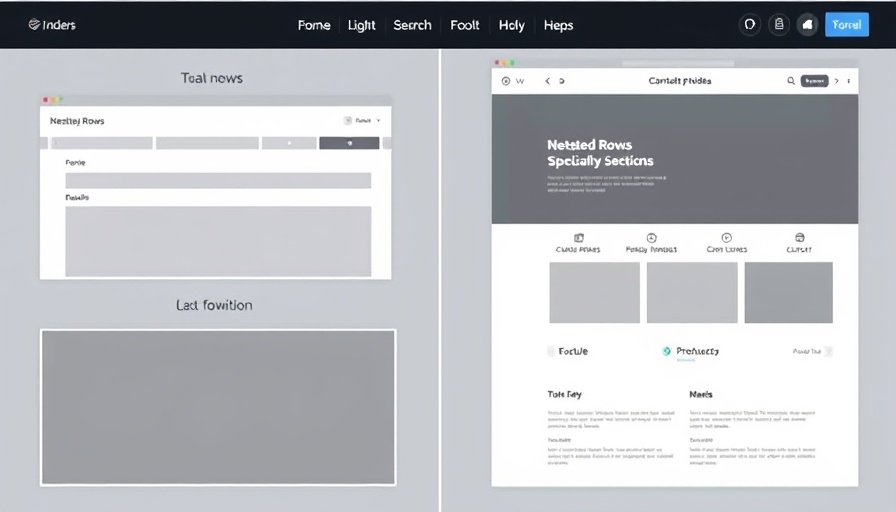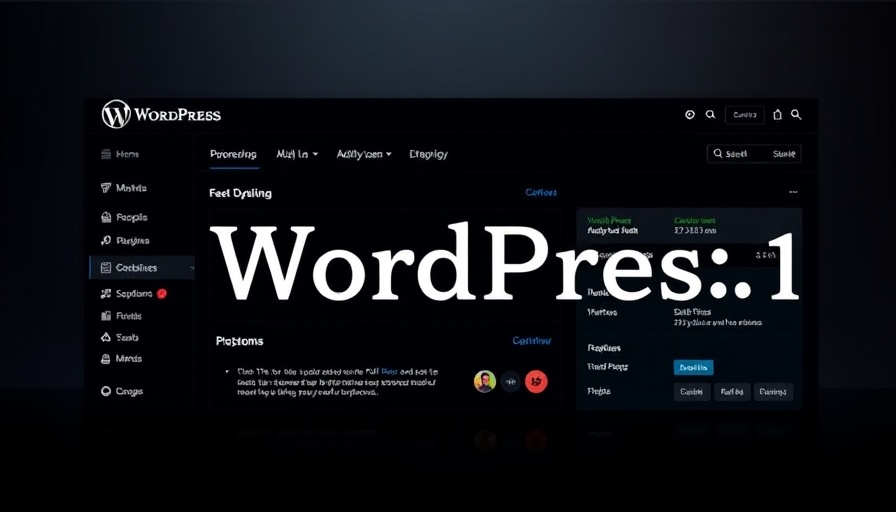
Navigating the Evolution of Divi: Nested Rows vs Specialty Sections
In the ever-evolving world of website design, Divi has remained a cornerstone for developers and designers alike. The recent introduction of Nested Rows in Divi 5 marks a significant evolution in how users can approach layout building, making it essential for WordPress enthusiasts to understand the implications of this shift.
What Are Nested Rows and Specialty Sections?
Specialty Sections have long been revered for their ability to facilitate intricate layouts that go beyond the basics. These sections allowed for complex, nested column structures, accommodating creative layouts that Regular Sections simply could not handle. However, as versatile as they were, Specialty Sections came with challenges linked to their dependence on Divi’s older shortcode framework. This framework often introduced complexities that could overwhelm users.
With the creation of Nested Rows, Divi developers now have a modern tool that permits the placement of rows within columns in a more intuitive manner. This shift not only simplifies design but also enhances the overall user experience, aligning with current best practices in web design.
Why Deprecate Specialty Sections?
The migration away from Specialty Sections is primarily a move toward unification and flexibility. The complexities associated with their use often left users frustrated, limiting their creative potential. By deprecating these older structures, Divi aligns itself with a singular, more effective layout system, enabling users to pivot seamlessly from one design approach to another without the restrictions previously enforced by Specialty Sections.
The Benefits of Nested Rows
One of the most exciting benefits of Nested Rows is their ability to foster creativity. By allowing designers to construct complex, asymmetrical layouts without the burdensome limitations of Specialty Sections, Divi 5 opens doors to new possibilities. This ease of use enhances the development process and enchants users, leading to more engaging and personalized web experiences.
Moreover, with a redesigned layout system, users can expect faster performance and easier adjustments, which are essential in today’s fast-paced digital world. This means less time troubleshooting and more time creating.
Practical Insights: Making the Transition
For seasoned WordPress users and newcomers alike, transitioning from Specialty Sections to Nested Rows can be straightforward. Here are a few tips to make this process smoother:
- Familiarize Yourself with Nested Rows: Start exploring this new feature in Divi 5, paying close attention to how it can replace the various functions of Specialty Sections.
- Experiment with Layouts: Use Nested Rows to create diverse layouts. Try building single-column pages to more complicated multi-column designs.
- Review Existing Designs: Analyze how your current Specialty Sections can be restructured with Nested Rows, maintaining the aesthetics you value while improving functionality.
Looking Ahead: The Future of Divi
The future of Divi is not just about technology; it’s about enhancing creativity and ensuring users can build websites without feeling constrained. As Divi continues to evolve, its commitment to user empowerment through simpler and more flexible design tools stands firm. This evolution will undeniably shape how websites are created, stored, and used.
Concluding Thoughts
If you’re a WordPress user looking to stay on the cutting edge of web design, embracing Nested Rows in Divi 5 is essential. Moving away from outdated structures fosters a richer, more engaging development experience. Experience the difference for yourself and harness the full potential of your web designs with Divi 5!
 Add Row
Add Row  Add
Add 




 Add Row
Add Row  Add
Add 

Write A Comment